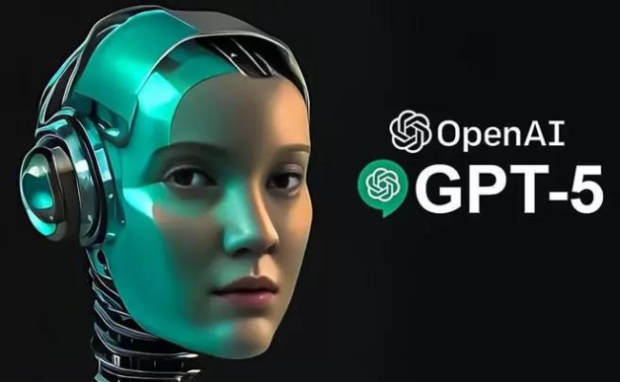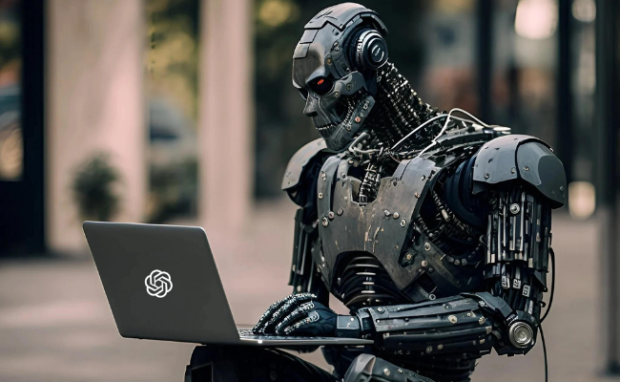OpenAI filed a trademark application for GPT-5
OpenAI recently filed a trademark application for “GPT-5,” the next version of its popular large language model. Tech news outlet GHacks said the company is in the “new application processing stage” covering various AI and language model categories. These include computer programs, artificial speech, and natural language processing.
In June, CEO Sam Altman denied rumors his tech company is developing GPT-5. Two months later, its latest trademark application shows we might see this new LLM soon. As a result, it could significantly transform artificial intelligence and our lives again after ChatGPT did it last year.
We may witness the emergence of artificial general intelligence soon! This article will discuss the aspects of the GPT-5 trademark application. Later, I will cover online rumors about its groundbreaking capabilities.
What do we know about GPT-5?

Photo Credit: technopixel.org
I wrote an article about GPT-5 in March, but CEO Sam Altman denied developing this AI model a month later. However, his company filed a trademark application for that name on July 18, 2023.
Having a trademark for a logo or brand name means you own everything associated with them. You define all those “things” in your application, so nobody else can use them without your approval:
- Downloadable computer programs
- Artificial speech
- Text production
- Natural language processing
- Understanding and analysis
- Machine-learning-based language
- Speech processing
- Language Translation
- Sharing datasets for machine learning
- Predictive analytics
- Building language models
You may also like: The top 10 daily applications of ChatGPT
That is an exhaustive list, but I omitted some from OpenAI’s application for brevity. Defining many aspects may imply the company would launch GPT-5 as one of its products. Specifically, it would use that as ChatGPT’s new LLM.
What are the potential features of GPT-5?

Photo Credit: gearrice.com
OpenAI hasn’t confirmed working on GPT-5 at the time of writing. However, reputable AI developers claim the company will release it this year.
You may also like: Meta launched a “human-like” AI image creation tool
AI dev Siqi Chen claimed, “I have been told that GPT-5 is scheduled to complete training this December and that OpenAI expects to achieve AGI. Which means we will all hotly debate as to whether it actually achieves AGI.”
AGI means “artificial general intelligence,” an AI system that can think and behave like a human! Let us discuss the implications I covered in my other article:
- ChatGPT could perform tasks if GPT-5 gives it AGI. Instead, the bot could deduce and infer solutions like people.
- GPT-5 will pair that human-like reasoning with its massive computational processing power. Consequently, ChatGPT may solve problems we couldn’t. For example, it could access numerous pages of criminal law to defend a client effectively.
- It could turn ChatGPT into everyone’s personal assistant. OpenAI could integrate that into robots that follow orders and perform mental and physical tasks.
Are we prepared for human-like AI?

Photo Credit: devdiscourse.com
The most distressing aspect of human-like artificial intelligence is we don’t know how to handle it properly. We’ve seen movies and shows depicting its potential impact, but they would not come close to real life.
Nonetheless, several companies and governments have been preparing for that scenario. Believe it or not, OpenAI is leading the charge to control AI development.
In May 2023, Sam Altman attended the first-ever Senate hearing for AI development. The CEO confirmed his commitment to creating and following AI regulations.
You may also like: How to use the ChatGPT iOS app
However, he and the lawmakers admitted they need further discussion to cover this technology’s potential impacts. OpenAI also formed a team to control a future AI “superintelligence.”
Its lead scientist, Ilya Sutskever, leads this group of experts. The Superalignment team said it will train future artificial intelligence with the following steps:
- The team will provide training signals on tasks humans can’t handle so that AI systems may take over instead. Moreover, Sutskever’s group will understand and control how their models spot tasks humans overlook. Both methods, scalable oversight and generalization, will help develop a scalable training method.
- Next, the Superalignment team will validate their AI training or “alignment.” It will automate searching for problematic behavior and internals. The experts call both methods robustness and automated interpretability.
- Afterward, the AI pros will test their new alignment researcher by deliberately training misaligned models. Then, the OpenAI team will perform adversarial training by checking if their researcher can spot the latter’s errors.
Conclusion
OpenAI recently applied for a trademark for GPT-5, its upcoming ChatGPT AI model. However, it has not shared more details about the project at the time of writing.
We don’t know how to handle an artificial intelligence that thinks like humans, but we can’t stop its development. Banning it could encourage people to develop it in secret.
Regulations ensure we can monitor their progress for the betterment of humanity. Learn more about the latest artificial intelligence and other digital trends at Inquirer Tech.